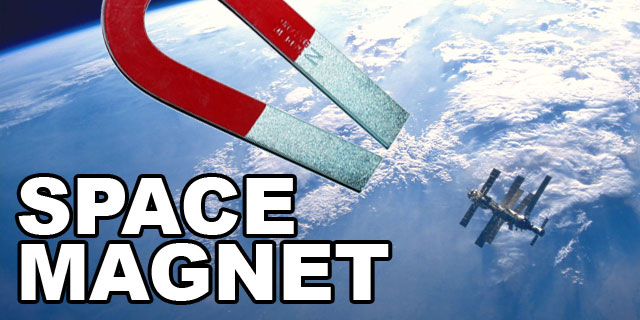

ImagineX Challenge Idea #6. As with the previous ideas, if it hasn’t been submitted to the ImagineX Challenge yet, please feel free to take this idea and submit it there as your own for your chance to be awarded $1,000. No strings. String-less.
Mark Strauss at io9 filed this report yesterday about all the space debris floating around our planet in Low Earth Orbit, half a million pieces of space debris according to a 2013 NASA estimate. One fear is that space debris will take out a satellite and, given that several countries are developing anti-sat military applications, the country that owned that satellite might mistake an act of nature for an act of war.
So, obviously, there’s a challenge: create a mechanism that would collect this space debris for reuse or disposal. That would be a pretty big challenge, more in the X Prize ballpark, if not bigger.
Mel Brooks’ team would of course attempt to build a giant space vacuum cleaner. (That’s the only Spaceballs reference I will ever make in this blog.)
I, however, am going to opt for a giant space magnet. Because Space Magnet sounds way cooler than Space Dustbuster. Also because magnetism can exist in many more places in our universe than air suction can.
Let’s say, for argument’s sake, that my LEO debris collection device is 20 years away from existing.
What needs to happen between now and then for this thing to become a reality?
Obviously, if there hasn’t been, there needs to be a breakthrough in the creation of giant magnets and our ability to control the EM fields they emit. We don’t want our space magnet to start affecting the operation of active satellites. Our magnet needs to have laser-like precision in its EM field generation. It should be able to aim its magnetic pull at a specific object or area. It should have the ability to balance its EM field to control the speed at which objects are drawn to it.
Or perhaps a technology could be devised that generated an EM shield around active satellites so that the space magnet does not affect their operation. This would not only require the creation of this technology but its implementation in all future satellites and retro-fitting of all current satellites.
If there hasn’t been, there also needs to be a breakthrough in LEO cartography. We need to know the exact path that our space magnet will travel around our planet to prevent the accidental destruction of any active satellites. There are currently around 750 active satellites.
There needs to be a breakthrough in how Earth-bound governments see space. For most, it’s merely a land claim. This is the sort of thinking that will get us into trouble in space, where the immense scope of everything supersedes nations, nation-building and any form of manifest destiny. It’s a completely different form of survival in space than we have here on Earth. An independent commission, free from the pursuits of nationalism, would likely need to be involved.
We’ll probably need an orbital construction facility. Building our space magnet on land and then transporting it into orbit in one solid piece would be far more challenging than transporting it in pieces and reconstructing it while in orbit.
These are just 5 challenges that could or would lead to the creation of a space magnet. And as crazy as the idea of a space magnet is, it does show what it takes to have a breakthrough. Every challenge is made up of a series of smaller challenges.
The OSS had to execute Operation Paperclip, Chuck had to break the sound barrier, Alan had to go into orbit, and Kennedy had to commit his government to the task, before Neil and Buzz could walk on the moon. And each of those breakthroughs were, in turn, made up of smaller breakthroughs. And those breakthroughs consisted of more, even smaller breakthroughs. And so on and so on. Every great breakthrough can be broken down into a series of actions, reactions and adaptations.
Progress does have a lowest common denominator. It’s you, taking action.








